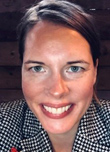RWE Is Not Optional, It's Essential
A conversation with Jennifer Timoshanko, head of medical strategy, bone health, UCB.

Real-world evidence (RWE) goes beyond the controlled environment of randomized clinical trials (RCTs) to deliver critical insights about a drug’s full clinical profile. Although its value is clear to some — including UCB’s Head of Medical Strategy for Bone Health Jennifer Timoshanko — its uptake has not been absolute.
In this Q&A, Timoshanko explains why RWE is a valuable alternative to RCTs and shares best practices for collecting it, including using systematic literature reviews to map existing knowledge, applying rigorous and transparent methodologies for data selection, and combining multiple data sources to address evidence gaps.
Real-world evidence from multiple data sources indicates that romosozumab can reduce healthcare burden, can gain widespread adoption as a first-line approach, and highlights the need for better physician adherence to osteoporosis guidelines. Generally speaking, why is collecting RWE crucial to the drug development process? And is it essential for every program?
Essential — yes! In today’s data-driven landscape, RWE is playing an increasingly pivotal role in drug development by providing a more comprehensive understanding of a drug’s impact, supporting faster regulatory pathways, and revealing unmet needs in early-stage development. While RCTs remain the gold standard for establishing the clinical efficacy and safety of new treatments, RWE is gaining recognition as a valuable alternative — particularly in scenarios where RCTs are impractical or ethically challenging. Regulatory bodies, including the EMA, are increasingly embracing RWE to inform regulatory decision-making across both pre-approval and post-approval phases. Moreover, RCTs may not fully address all evidence gaps, especially those related to real-world clinical use, long-term safety, diverse patient populations, and the socioeconomic impact of the therapy.
Integrating real-world data is no longer optional; it’s essential to ensure medical innovation translates into meaningful health outcomes in practice. RWE can provide evidence to support new indications, expanded populations, or alternative dosing regimens. From a patient and system perspective, it’s hard to imagine a modern development strategy that doesn’t include real-world data.
Specific to romosozumab, to what degree has RWE given you a complete picture of how it’s prescribed and administered in the real world? What is left to learn?
The RWE to date has provided a comprehensive view of patient characteristics and clinical utilization, and it has established that the effectiveness in terms of bone mineral density (BMD) gains with romosozumab is very similar in routine clinical practice to what we saw in the RCTs. RWE can also offer critical insights by providing evidence on real-world usage patterns or patient preferences to inform clinical practice decision-making. Recent data from registry studies, retrospective claims analyses, and systematic literature reviews have allowed us to observe how treatment patterns differ across countries. For example, in some settings, there is strong uptake of bone-forming therapies earlier in the care pathway, particularly among patients without prior osteoporosis treatment. In others, data show significant under-treatment of very high-risk patients following fracture, despite the presence of national guidelines recommending intervention. This aligns with the broader picture in osteoporosis, where up to 80% of patients who experience an osteoporosis-related fracture are never diagnosed or treated — a staggering missed opportunity to intervene.
What this demonstrates is the value of RWE in evaluating outcomes and uncovering the daily realities of care delivery. It can identify where gaps emerge, where sequencing may be suboptimal, and where access issues may be limiting the intended use of therapy. It also reminds us that the effectiveness of treatment in the real world is not solely a clinical issue, it’s also a question of health system readiness, reimbursement alignment, and healthcare provider behavior.
Ultimately, RWE is a tool for validation and a continuous input into system-wide learning. It strengthens the case for timely, guideline-based care and supports our goal at UCB to help ensure a patient’s first fragility fracture is also their last.
What role does SLR play in supporting the collection of RWE?
Systematic literature reviews (SLRs) play a vital role in framing and contextualizing real-world evidence. They don’t generate new data per se but help summarize existing data and map the landscape — identifying patterns, inconsistencies, and gaps across studies and healthcare settings.
The recent SLR presented at WCO-IOF-ESCEO 2025 is a good example: It synthesized 67 studies across 10 countries, revealing consistent trends in bone mineral density improvements and highlighting how prior treatment history may affect outcomes. This kind of review helps us identify where insights can be confidently applied to elevate the standard of care and whether further evidence is needed to support better decision-making for patients.
SLRs provide the foundation to plan more targeted RWE efforts, support access discussions, and ensure that future studies address the most relevant and underexplored questions.
How do you find sources?
Finding the right sources for a systematic literature review is a highly structured process — and for good reason. We need to ensure the evidence we rely on is comprehensive, reproducible, and free from bias.
Typically, we search multiple databases, most often MEDLINE and Embase, as well as conference proceedings, using predefined search terms based on the research question. These terms are designed to capture both the intervention and the outcomes of interest, as well as variations in terminology across regions and study designs.
Crucially, all sources are screened against inclusion and exclusion criteria aligned with the review objectives. The PRISMA approach (Preferred Reporting Items for Systematic Reviews and Meta-Analyses) was adopted to improve the transparency, completeness, and reproducibility. That rigor is what transforms a SLR from a narrative summary into a scientific resource that can support policy, access, and future research decisions.
What is the approach to reviewing the documents and finding themes or commonalities? Do you let the literature guide you, or do you look for certain results?
There’s structure but also flexibility. We start with a clear research question and predefined outcomes of interest. For example, we look for changes in bone mineral density, fracture incidence, or treatment sequencing patterns. These guide the inclusion criteria and help ensure we extract consistent data across studies.
But it’s just as important to remain open to what the evidence tells us. In practice, we often identify variations in how real-world studies are designed, the populations included, or how outcomes are measured. Those variations can reveal important insights. For instance, the WCO 2025 systematic review highlighted that treatment-naïve patients tended to have greater BMD gains, which reinforces the clinical relevance of sequencing, even though that wasn’t the only focus of the review.
So, while we are looking for answers to specific questions, we also let the evidence shape our understanding. That’s what makes systematic reviews useful; they don’t just confirm what we expect, but they often highlight nuances that inform future research, access strategies or education priorities.
SLR doesn’t fill all knowledge gaps, so what other approaches can be deployed, such as claims data analysis and registry studies?
That’s absolutely right — while SLRs are essential for synthesizing existing evidence, they rely entirely on what has already been published. To fill the remaining gaps, particularly around how treatments are used in practice, we often turn to real-world data sources like claims data, electronic health records, registries, and site‐based chart data.
Each brings a unique lens. Claims data are especially useful for understanding treatment patterns, adherence, and healthcare resource use. In Germany, for example, claims analyses revealed that many women with high-risk fractures remain untreated, despite clear guideline recommendations, and face a high risk of secondary fractures.1
Real-world data studies also provide richer clinical context and support longitudinal follow-up. A recent registry‑based Danish retrospective cohort study showed that a high proportion of romosozumab-treated patients were treatment-naïve, offering insight into utilization patterns and factors associated with receiving treatment with romosozumab in real-world practice.2 Ultimately, no single method answers every question. The strength lies in combining them, using SLRs to frame what we know and real-world data sets to understand how care is delivered and where we can close the gap between evidence and practice.
In what way will this data affect the romosozumab program going forward?
Emerging real-world data is playing a pivotal role in shaping the future of the romosozumab program. It provides critical insights into how those at very high fracture risk are managed and how their care journeys unfold. These insights are already informing our strategic priorities.
RWE enables us to evaluate how romosozumab is being adopted in clinical practice and when, within the context of an osteoanabolic-first treatment paradigm, it marks a shift from understanding clinical effectiveness to assessing how clinical practice is changing. This prompts us to ask: Are we driving systematic change — shaping policy, improving access, and ultimately transforming care for those with osteoporosis at very high fracture risk?
To ensure we deliver on this meaningful impact, we must collaborate closely with the healthcare community to support RWE initiatives, including benchmarking against key performance indicators such as those used in Fracture Liaison Services and guideline adherence. These efforts help identify both gaps (knowledge and system) and best practices, because, as the saying goes, “What gets measured gets improved.”
RWE is also uncovering new unmet needs — patient populations at very high fracture risk who may require additional evidence to support the use of romosozumab. This not only guides future access strategies but also informs earlier evidence planning in future development programs.
In short, RWE helps close the loop between innovation and impact, ensuring that what works in a clinical study is validated and applied in clinical practice.
References:
- Melnik S. 2025. WCO-IOF-ESCEO 2025. #892.
- Langdahl B. 2025. WCO-IOF-ESCEO 2025. #P296.
About The Expert:
 Jennifer Timoshanko is the head of medical strategy for bone health at UCB, where she has spent nearly eight years driving scientific communications and the global medical strategy for the company’s bone health portfolio. Since joining UCB in 2010, she has held multiple leadership roles across immunology, real-world evidence, publications, and scientific communications
Jennifer Timoshanko is the head of medical strategy for bone health at UCB, where she has spent nearly eight years driving scientific communications and the global medical strategy for the company’s bone health portfolio. Since joining UCB in 2010, she has held multiple leadership roles across immunology, real-world evidence, publications, and scientific communications
